It was Angelica Kauffman’s largest canvas, one of the most ambitious oil paintings of its era. But the whereabouts of Religion Attended by the Virtues, perhaps the artist’s greatest work, are unknown. It was last seen hanging on the walls of the Guildhall in Plymouth more than 75 years ago.
Now Tate Britain is making a last-ditch attempt to be reunited with it. “It was regarded as Kauffman’s last artistic triumph,” said senior curator Martin Myrone. “We think it showed 11 lifesize figures in the kind of high-minded allegory popular artists were aspiring to then. It is important, as one of the first paintings in the UK’s national collection, and by an artist whose reputation is growing again. I can’t help wondering if it is rolled up in a corner of some council attic.”
Kauffman, who died in Rome in 1807, is best-known as one of two female founders of the Royal Academy of Art, alongside Mary Moser. Swiss by birth, she was hailed as a child prodigy during her childhood in Italy and moved to England in her 20s to focus on painting and make the most of the patronage of wealthy Britons.
In London, Kauffman was close to the English painters Nathaniel Dance and Sir Joshua Reynolds, also among the 34 founders of the RA in 1768. Her salon became a meeting place for artists and writers, and at one point she was as famous for her society affairs and her looks as for her paintings.
The missing work was painted in the early years of the 19th century, and Myrone believes its careless handling after her death is telling. Its first owner, James Forbes, left it to the British Museum in 1835, ahead of the 1838 creation of the National Gallery. The painting was then moved to a space that later became the Tate. By 1913, documents show, the work had been sent for display in Plymouth.
Plymouth, a crucial port, was heavily bombed in the second world war and the Guildhall was one of the casualties of a terrible raid in March 1941, in which all records were destroyed. Survivors of the air raid have recorded that Plymouth, which eventually suffered 59 raids in all, was “a ghostly sight” and that the building was “just a shell”.
Some fear the painting may also have been destroyed. “A grainy photograph appears to show it hanging in the Guildhall, so it has been assumed it perished,” said Myrone.
A curator at Plymouth City Museums and Galleries said this weekend that the picture was “an interesting case” and one that had “crossed her desk some years ago”.
A Tate inventory says the canvas measured seven feet by nine. It was never photographed, so all that survives is a contemporary engraving, the image of which is projected on to a wall in Tate Britain.“Finding it now may be wishful thinking,” said Myrone, “but you never know: paintings do get rediscovered. John Martin’s The Destruction of Pompeii and Herculaneum was thought to have been destroyed when the Thames flooded in 1928, but its remains were found and restored in 2011. Kauffman’s painting would be a more significant find.”
No further women painters were elected as academicians until the 20th century. However, visitors to the Front Hall of the Royal Academy in Piccadilly can still see the four ceiling roundels Kauffman painted.
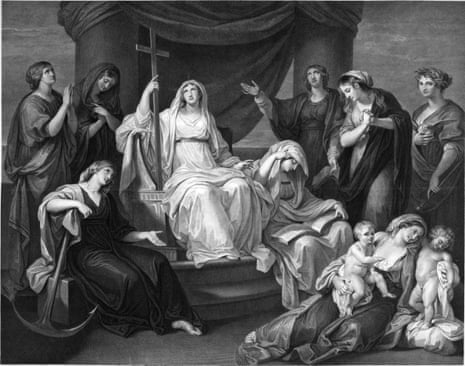
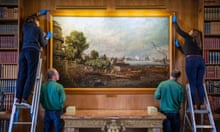
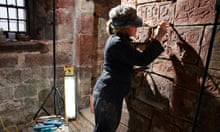

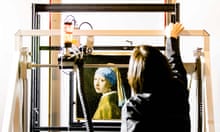
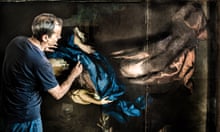



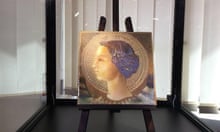
Comments (…)
Sign in or create your Guardian account to join the discussion